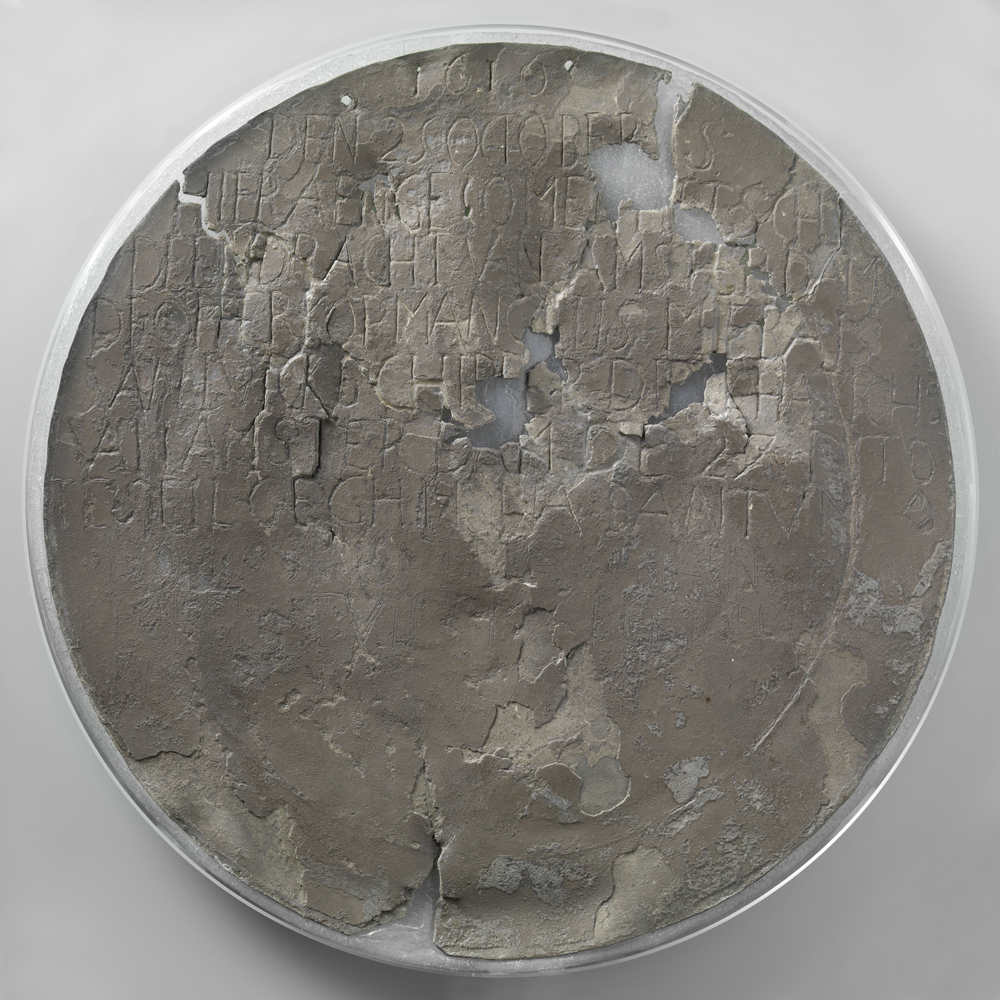Stop 1 - Dirk Hartog dish
In late October 1616, the crew of the Dutch East India Company vessel Eendracht (meaning Unity or Harmony) spied an unfamiliar stretch of coastline. Quickly surveying the area, skipper Dirck Hartogh called upon the cook to flatten a large pewter plate and engraved it with his arrival and departure dates and the names of the senior crew aboard. The plate was nailed to a post on the northern edge of what is now Dirk Hartog Island off Shark Bay.
This quite ordinary object carries an extremely powerful and complex emotional charge. Once inscribed and nailed to a post, this plate played a part in shaping the future of the lands that we now know as Australia.
Portuguese seafarers had long marked key locations down the African coast with stone crosses inscribed with names and dates to demonstrate their presence in the area. These Christian markers must also have helped to make these very foreign landscapes a little more familiar to European crews as they passed by. When the Company followed into the region, they inscribed stones with details of their ships, company officials aboard, and the dates of their arrival and departure, helping to track the timing of voyages to and from Batavia (now Jakarta, Indonesia). These stones must have generated great excitement among crews who spied them, as letters for other Company vessels were often placed near such stones. Hartogh followed in the Company tradition then, using what he had at his disposal to leave a message behind for others on this unfamiliar land.
Soon after Hartogh reported his actions, maps of the region described the coast that he had encountered as ‘the land of the Eendracht'. Until the 1650s, Governors-General at Batavia supported expeditions to explore lands and resources that crews encountered, and to engage local peoples in trading partnerships. Crews were certainly aware of indigenous peoples in the areas, reporting smoke, campsites, tools and footprints and they were even instructed how to display emotions on their faces, while controlling their real feelings, in ways most likely to induce local peoples to trade with them. Abel Tasman stated quite clearly, when he ordered a flag be planted in the soil in what is now Tasmania in 1642, that he was doing it so that Europeans and local people would know that the land was now a VOC possession. Later, as Nova Hollandia (New Holland), the area became part of a wider European race for territorial possession.
When Vlamingh passed through the region on his 1696-7 voyage, he was anxious to locate Hartogh's plate, a proud symbol of the Company's reach. When he found it lying at the bottom of the rotting post, he carefully transported it back to Europe, while leaving a new plate in its place – this time, adding his own name alongside Hartogh's exploits to the record of the Company's history in this region.
The plate Hartogh left behind represents a significant moment in European exploration that shaped how the resources, lands and peoples of what became Australia were understood thereafter. It has generated many different and complex feelings from pride and excitement, to anger and frustration, in the varied audiences — European, indigenous, settler, — who have drawn meaning and identity from this simple piece of pewter.


